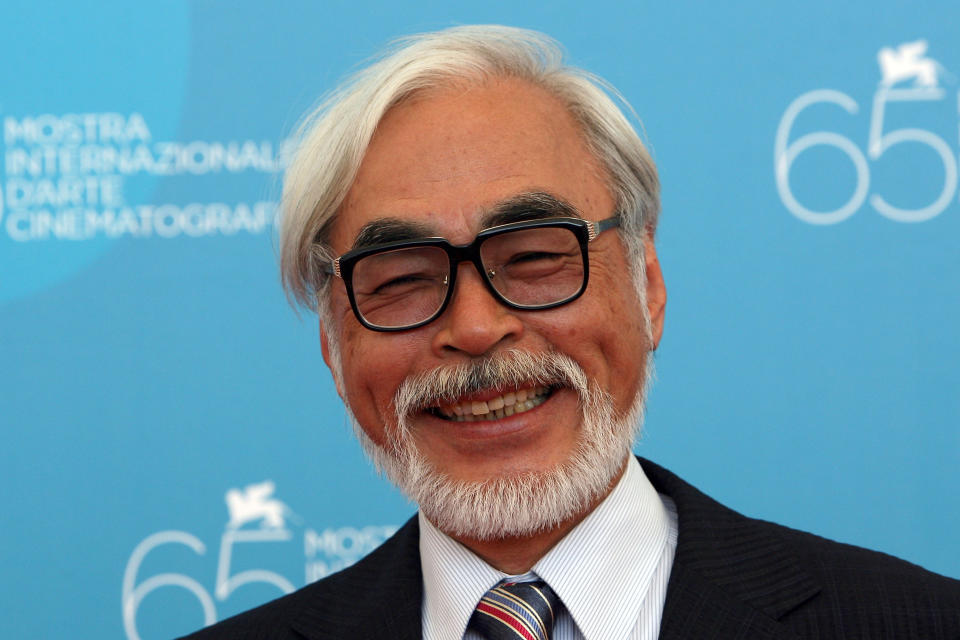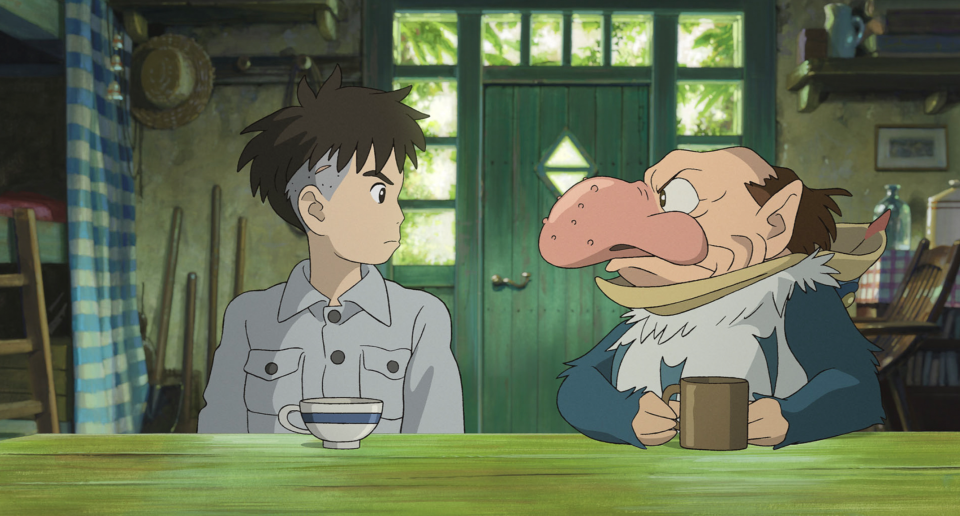Hayao Miyazaki’s ‘The Boy and the Heron’ Is Studio Ghibli and GKIDS’ Biggest Marketing Challenge Yet

It’s been 10 years since animation master Hayao Miyazaki made a film and 12 years since GKIDS took over North American distribution for the studio he co-founded and helped make iconic. But though “The Boy and the Heron” — which opened to raves out of TIFF on Thursday — is likely the last Miyazaki film GKIDS will have the privilege of releasing, it’s also the distributor’s first.
“The Wind Rises” in 2013 was still released domestically by Disney and Touchstone (it made $5.2 million). And though the distributor’s annual Ghibli Fest has grown year over year in “spreading the gospel” of Ghibli and Miyazaki, as the distributor’s president Dave Jesteadt puts it, having a new film from the man himself is a different challenge entirely.
More from IndieWire
“I’d be lying if I said I didn’t feel tremendous pressure. That’s also joined by a feeling of tremendous honor,” Jesteadt told IndieWire. “This is not someone who creates a new film every year. So it really does need to be handled in the most special way.”
Jesteadt says he’s not worried about the economics of the film and is confident audiences will show up. But he does want to make sure “The Boy and the Heron” finds “the audience this film deserves.”
To that end, GKIDS is treating “The Boy and the Heron” as its biggest release in its 15-year history. Though Jesteadt doesn’t yet have specific numbers for its Dec. 8 opening, the plan is a nationwide release for “The Boy and the Heron” that should easily surpass the 1,300+ screens that last year’s “Belle” opened on, the widest release in its history that ultimately earned $4 million domestic. It will also open across IMAX screens, where in Japan it brought in $1.7 million of the total $13.2 million opening weekend on just 44 IMAX screens, a fraction of the overall footprint.
Studio Ghibli, with the exception of a request to change the film’s international title from the Japanese “How Do You Live?,” is largely letting GKIDS call the shots.
“We have a phrase in Japan that could translate to ‘When in Rome, do as the Romans do,’ Junichi Nishioka, Ghibli’s VP of International, said via a translator. “We know very deeply about Japanese domestic marketing and audiences, but we don’t know that much about international efforts. So we basically are leaving it up to GKIDS to work on the promotion.”

GKIDS has made one notable change to the marketing strategy Ghibli employed in Japan, which was to not do any promotion at all (GKIDS put out a teaser ahead of its TIFF premiere on Thursday night). “How Do You Live?” opened in Japan on July 14, but did so without releasing any movie stills, a trailer, or other promotional materials beyond an early sketched poster of the title gray heron. In yen at 1.83 billion, that was the highest Ghibli opening in history, even if its $52.9 million take hasn’t yet legged out to the heights of “The Wind Rises” or some of Miyazaki’s earlier films like “Howl’s Moving Castle,” “Princess Mononoke,” and “Spirited Away,” which remain some of the highest grossing movies in Japan of all time.
Nishioka says that was a real gamble on the part of producer Toshio Suzuki, who recalled seeing movies as a kid without any pre-awareness and always going in with a fresh mind. “How Do You Live?” is not based on the famous 1937 Japanese book of the same name, but Nishioka explained that the title combined with Miyazaki’s own name recognition were strong enough in Japan to take a chance.
“He thought, what would happen, in these days when there are lots of ads and tie-ups and trailers even before the film is released, what would it be like if we had no promotion,” Nishioka said. “Will the film be received well? Will it be accepted? So it was a big risk and a bet that he made and thought up. But I think the result shows that we won that bet. I don’t think we can do this kind of thing again, but this time it was successful.”
Even with Miyazaki’s name and the excitement around what is likely his last movie, “The Boy and the Heron” will not be an easy film for GKIDS to market. The first challenge is reaching the core Ghibli fans while also letting newer audiences understand why this movie is an event. The growth of Ghibli Fest has done a lot to prepare audiences for this moment, in which he says new generations are growing up with “Howl’s Moving Castle” and “Ponyo” rather than “My Neighbor Totoro” and “Kiki’s Delivery Service.”
“We’re going to continue to find ways to both make sure that the film can reach its widest possible audience while staying true to a lot the marketing and the integrity that Studio Ghibli has,” Jesteadt added. “We don’t foresee a world where we’re trying to make this film something it’s not.”

The second is conveying the many layers and tones Miyazaki’s film evokes, one that references and borrows elements from just about every prior film in his career. Despite largely being a fantasy, “The Boy and the Heron” opens with a chilling and riveting sequence depicting a hospital fire that echoes how Miyazaki lost his own mother. It is also most definitely not a children’s film, hewing more closely to the violent anime of “Princess Mononoke” than the cuddly charm of “My Neighbor Totoro,” though the adorable floating marshmallow-looking characters known as “Warawara” might make you think otherwise.
“One of the reasons that we chose some of the shots and chose the music and emphasis of it was to give people just a taste that this is going to be a Miyazaki film unlike what they’ve seen before. There’s a level of intrigue, of fantasy and maybe a little bit of horror,” Jesteadt said. “For me, if I were 10, 11-years-old, I would be blown away.”
They’ll also have to sell the movie largely without Miyazaki himself. Jesteadt says it was “pretty clear” even years ahead of time that the 82-year-old Miyazaki was unlikely to be an “active participant” in the promotion of the film, though that could change.
“He is his own person. I can’t say anything for certain, but my understanding is that we’re looking to find a way to really celebrate his legacy. Being older, we want to respect the difficulty of traveling,” Jesteadt said. “And this film is deeply personal for him. The film is the statement. We’re trying to treat it that way. He created this semi-autobiographical story I think really touches on so many aspects of his life, his relationships, and his thoughts in a really exciting, fantasy-adventure setting. That is the testimony in some ways.”
Nishioka though hesitates to call “The Boy and the Heron” Miyazaki’s swan song, even though every headline you’ll see along with Miyazaki’s own retirement comments suggest otherwise.
“At Studio Ghibli, we don’t consider this to be Miyazaki’s last film. So we believe that this will not be his last film,” Nishioka said. “However, Miyazaki is 82-years-old. Yet he comes and works very intentionally and energetically at the studio on new projects.”
But Miyazaki did not accompany the film for its TIFF premiere, and it’s unlikely he’ll make his way stateside anytime soon, including for GKIDS’ Animation Is Film festival in October. He’s not thinking about its Oscar chances either.
“We’re not doing this to promote our chances for the Oscar. We’re doing it to promote showing the film. GKIDS might disagree with us,” Nishioka said. “Studio Ghibli is not thinking of having this film be in competition with other films. We don’t want to think that films have wins and losses attached to them. Miyazaki just wants people to see the film and to enjoy the film.”
Best of IndieWire
Nicolas Winding Refn's Favorite Films: 37 Movies the Director Wants You to See
The Best LGBTQ Movies and TV Shows Streaming on Netflix Right Now
Unsimulated Sex Scenes in Film: 'Nymphomaniac,' 'Brown Bunny,' 'Little Ashes,' and More
Sign up for Indiewire's Newsletter. For the latest news, follow us on Facebook, Twitter, and Instagram.

 Yahoo News
Yahoo News 
